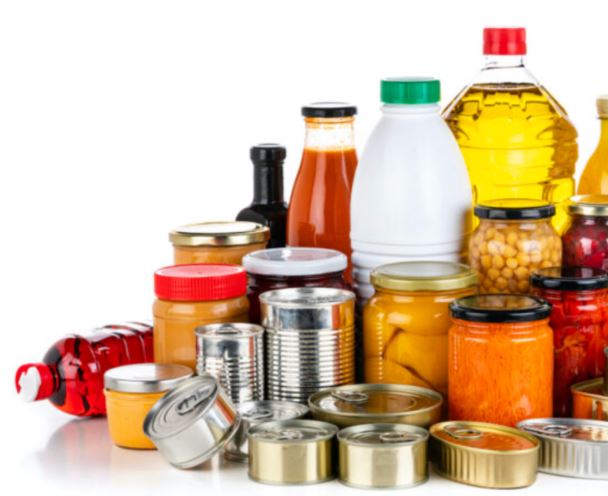Think about the last time you went to the grocery store. Maybe you bought a gallon of milk, a carton of strawberries, a box of granola bars, a jar of peanut butter. Each of these food or beverage products likely came in plastic or glass packaging. Humans have become heavily reliant on packaging for two key reasons: convenience and safety. Doing so has had huge implications for the environment — from the carbon-emitting fossil fuels used to make packaging to the habitat-harming trash it becomes when we’re done.
Which is why many consumers and producers are looking for “sustainable alternatives” to lessen the harmful impact on our planet. Between 2016 and 2020, Google searches for sustainable goods increased by 71%. But can packaging really be sustainable? Well, it’s more nuanced than you might think.
Glass vs. Plastic
The Oxford English Dictionary’s definitions of “sustainable” include “capable of being maintained or continued at a certain rate or level” and “designating forms of human activity (esp. of an economic nature) in which environmental degradation is minimized.” The question of what constitutes sustainable packaging often focuses on two common materials: glass and plastic. Plastic has been demonized in recent years due to its origins in fossil fuels and its finite life in a recycling plant. Images of the Great Pacific Garbage Patch often depict piles of single-use water bottles and other plastic debris floating in the ocean.
Unsustainable Glass?
Despite the common assumption that glass outweighs plastic in environmental benefits, some recent life-cycle assessments (LCAs) show a more complicated story.
In 2020, researchers at the University of Southampton looked at the relative environmental impacts — from raw material extraction through use and final disposal — of glass and plastic used in beverage packaging. The LCA assessed 1-liter (1.06-quart) beverage containers into three categories: fizzy drinks, fruit juice and milk. It examined glass bottles, aluminum cans, milk cartons, Tetra Pak, and two types of plastic bottles, polyethylene terephthalate (PET) and high-density polyethylene (HDPE).
The assessment focused on 11 “impact categories” within the three beverage groupings, ranging from eutrophication to global warming potential to toxicity for humans. The glass bottle had a higher negative impact than the typical packaging alternatives for each beverage across nearly all impact and beverage categories.
An older LCA, published in 2014 in The International Journal of Life Cycle Assessment by researchers from GE and LCA consultant EarthShift, compared glass and plastic bottles for holding contrast media used in X-ray procedures. The LCA suggested that the plastic bottle had lower environmental impacts across all designated impact categories, including greenhouse gas emissions, impact on ecosystems and impact on resources. Adding in the impacts of the packaging containing the bottles yielded less clear results, however.
Also in 2020, researchers in the Department of Civil and Environmental Engineering at the Politecnico di Milano in Italy published an LCA comparing reusable glass bottles to single-use glass bottles. The LCA concluded that the refillable glass bottle is “by far preferable” to the single-use glass bottle. However, as the study notes, the distance a refillable bottle travels affects how well (and, at large distances, whether) it has a lower overall environmental impact than the single-use option.
According to Packaging Sustainabilityauthor Wendy Jedli?ka, the weight of glass has a heavy impact on its carbon footprint. In the United States, the manufacturing of glass and glass products was responsible for 15 million metric tons (16.5 million tons) of carbon dioxide equivalent greenhouse gases in 2018.
Is Plastic Any Better?
While these LCAs may have surprising conclusions about glass for some readers, writing previously in Ensia, freelance writer Karine Vann noted, “[LCAs] tend to privilege the impacts of production (which, for example, materials like plastic score well on because they are lightweight and low-carbon to produce) over the impacts of disposal (a measure for which, being difficult or impossible to recycle, plastics score poorly).” One study found that 79% of plastic ends up in a landfill or in nature, potentially harming wildlife. And according to the U.S. Environmental Protection Agency, in 2018 just 2 million tons (1.8 million metric tons) of plastic containers and packaging were recycled — 13.6% of the amount generated that same year…..
Culture Is Key
Sustainability in packaging requires not only systems thinking but also a consideration of culture, says Packaging Sustainability author Jedli?ka. Systems thinking takes a holistic approach that brings together different elements of society, such as people, the economy and the environment. In packaging design, systems thinking looks at addressing human needs while also considering impacts to the planet.
Including culture into a systems thinking methodology makes for a more useful tool, Jedli?ka says. For example, she notes that for years train passengers in India would drink chai tea out of unfired clay cups, then toss the cups out the window to the side of the tracks, where they would degrade. When plastic cups were introduced the habit continued, littering the landscape….
Whole System Thinking
The scope of sustainable packaging ranges far beyond the debate over glass versus plastic — a conversation that is ongoing — and there isn’t a universal sustainable packaging material. “There’s not one answer, and there’s not one optimal packaging type. I mean, glass is great, but paper is also great, and so are many other materials,” says Jedli?ka, “in the right context, and preferably as part of a closed-loop system.”
In the perspectives of Muncke and Jedli?ka, as important as the stuff our stuff comes in, is considering why we need a product in the first place and the culture in which it functions. Taking these additional aspects into consideration allows decision makers — both producers and consumers — to think more holistically about packaging and products, which is more likely to change the systems in which this all occurs, and, in doing so, contribute to finding packaging that is truly sustainable.
By: Wausau Pilot & Review
THE ORIGINAL ARTICLE CAN BE FOUND HERE

